- Hotline: 852+ 2891 9689
- Whatsapp: 852+ 9146 8426
- [email protected]
- 6/F 29 Austin Road, Tsimshatsui, Kowloon, Hong Kong



At Dr. Bertram Hair Transplant Centre, our approach is built around one core principle: quality matters more than quantity. Every step of our procedure is carefully designed to maximize graft survival, ensuring that each transplanted follicle has the best chance to grow strong and last a lifetime.
We apply advanced methods to protect grafts from damage and dehydration, from extraction to placement. Our hairline design is personalized to each client’s facial structure, using artistic principles to achieve results that look completely natural — never artificial or “pluggy.”
Equally important, we follow strict international standards for safety and infection control, use painless anesthesia techniques, and apply long-acting numbing agents for a smooth recovery.
Most patients return to work within just a few days. With us, you’re not just getting a transplant — you’re getting a well-planned, doctor-led treatment focused on long-term success and your overall well-being.
Our doctors are committed to continously refine techniques for your best result. Creating a unique hair transplant technique benefits patients significantly. It ensures personalized procedures for optimal results, fosters ongoing advancements for top-notch care, and delivers superior outcomes that enhance patient satisfaction and confidence.
Unfortunately correcting a poorly placed hairline is always impossible. The only remedy is to do it right in the first place. Here we have some of these examples referred to our center for repair.
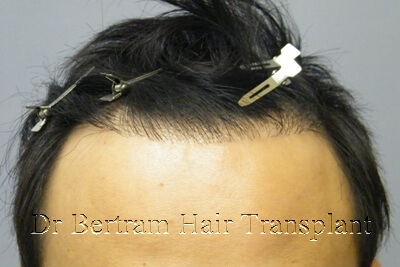
Example 1 : Position of the hairline was reasonable, but the density was too low. Also the hairline was too rigid and orderly to be natural
How We Fix It: Randomly add on density in front of and amongst the existing hairs
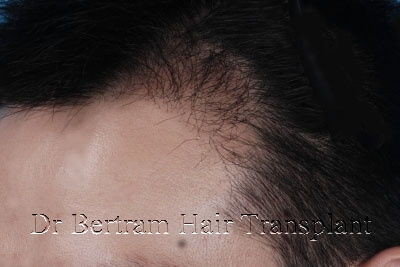
Example 2 : The new apex was too rounded. The transplanted hairs did not match the existing ones in angles and directions.
Remedy: Punch out the unwanted transplanted hairs and recycled, will leave scars
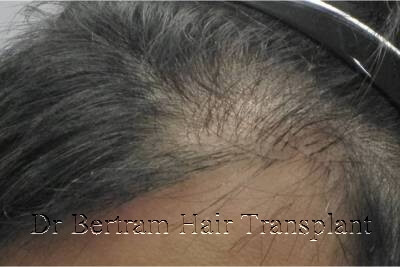
Example 3 : Not enough grafts to fill in the center behind the hairline, creating the look of a Kappa
Remedy: Simply add on the density
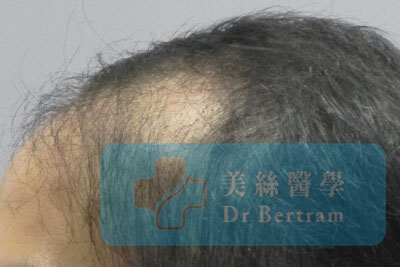
Example 4 : There was inadequate density of grafts behind the narrow hairline.
Remedy: Add more grafts in the empty area.
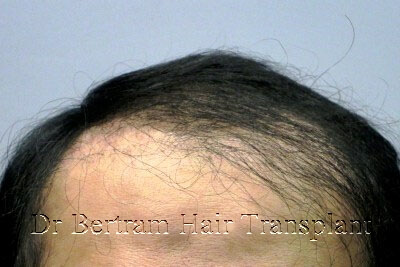
Example 5 : Asymmetry in the hairline – the right side is higher than the left by 2cm.
Remedy: Lower the right side by 1cm may improve.
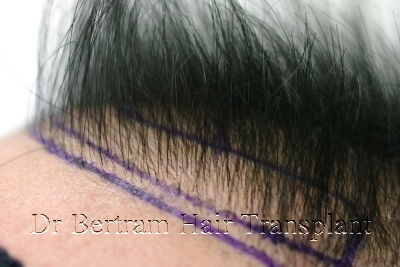
Example 6 : Difficult to style the hair as the grafts were inserted perpendicularly. Correct angle should be 35-45°.
Remedy: No!
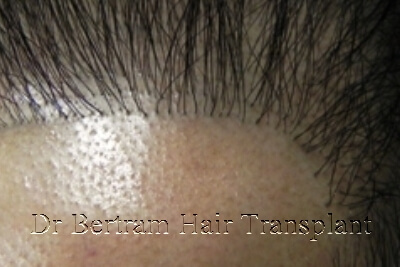
Example 7 : The typical ‘Corn Rows” appearance, when minigrafts instead of follicular units were used. The insertion was too orderly.
Remedy : Put some 1-hair FU in front, and add more grafts in between.
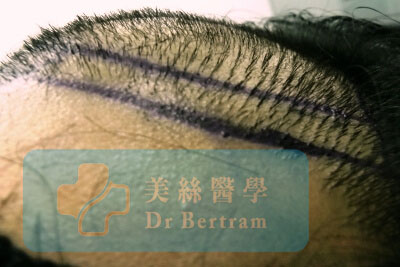
Example 8 : Another typical example of the “Corn Rows” appearance. The pattern is more obvious on cutting short the hair.
Remedy : Add grafts in between inorderly to be more natural looking.
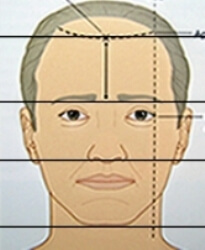
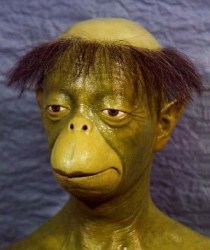
河童 or “river-child” are legendary creatures, a type of water sprite found in Japanese folklore.
Kappa are typically depicted as roughly humanoid in form, and about the size of a child. Their most notable feature is an indentation on the top of their head that holds water; this is regarded as the source of their power. This cavity must be full whenever a kappa is away from the water; if it spills, the kappa will be unable to move (source of information)。
We recommend not to set the hairline too low, especially in young adults. There is always a risk of progressive hair loss extending to the crown. If the patient do not have adequate donor hair to cover the extensive bald area, they will end up with a rim of hair in the front, the appearance of a Kappa.
The primary aim of hair transplant is to good good, not just the transfer of hair from one region to another. Hair tansplant has gained popularity in the last few years. Consequently we are facing with an increasing demand for repairing work. Many patients are not happy with their previous transplant, and want us to do something.
Androgenetic Alopecia, also known as Male Pattern baldness

The Phi rule, also known as the Golden Ratio, is a mathematical principle that has been used to define beauty in terms of proportion and balance. In facial aesthetics, the Phi rule can be applied by measuring the ratios of various facial elements and ensuring they align closely with the golden ratio of 1.618. For example, the ideal facial structure might include the following based on the Phi rule:
These proportions are considered universally appealing and are used by plastic surgeons and dermatologists to guide cosmetic treatments and procedures, aiming to bring facial features closer to these ideal ratios.
This mathematical approach is believed to enhance facial harmony and attractiveness by aligning facial features with these aesthetically pleasing and naturally occurring proportions.
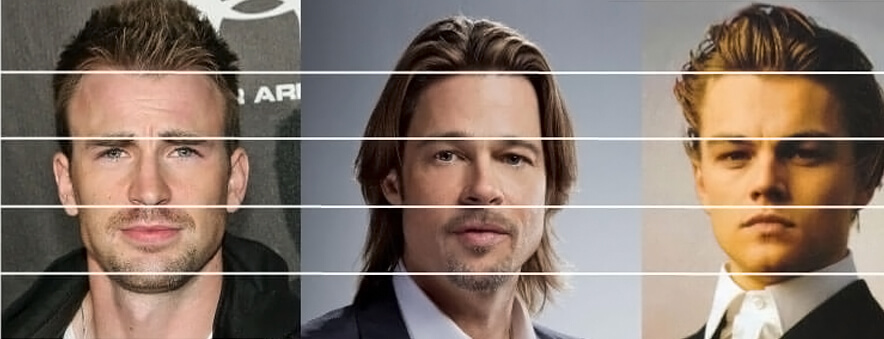
In Western countries the proportion of beauty is Da Vinci’s Golden Rule of Third.
In hairline design the Anterior-most point is set according to this rule. An ideal face should have equal vertical distance from:
From our observation not everyone fits into this rule, especially the Asians. The 3 facial parts as mentioned do not have to be exactly equal to look good. There are still some rules regarding their proportion if to look good.
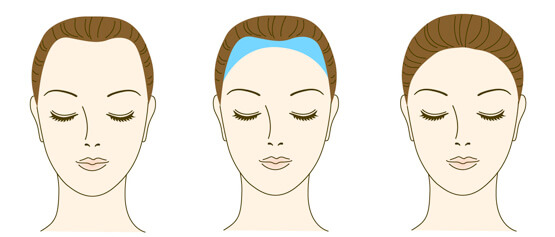
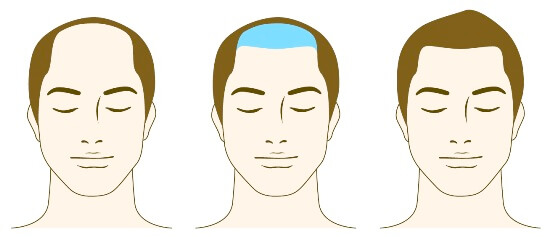
Your face is like a framed pictures, with the eyes being the focus. When you talk, the audience will look at your eyes to show interest and attention. With receded hairline, the upper frame is lost. Eye contact will unintentionally shift to your empty forehead – quite an embarrassment for both!
The first priority in hair transplant is therefore to re-frame the faces so that eyes of audience are not drawn toward.
All the facial features such as eyes, nose, hairline, lips, are related to each other in proportions. Dr. Marquardt quantified beauty scientifically by developing the “Perfect Face” Mask based on the Phi ratio 1 : 1.618. The closer various facial features such as length of nose, position of eyes and length of chin correlate to this mask, the more aesthetically pleasing the face is. Hairline provides a complementary balance to the other facial structures. Using the Da Vinci and Phi Principles Hair transplant can re-establish the aesthetic balance that was lost in the balding process.
The loss of hair is associated with old age. The apparent loss of vital energy adversely affects employment and social interaction. By restoring a hairline and adding on hair to bald scalp, an age-appropriate or even younger look can be achieved.
We judge by pattern recognition. The followings are basic criteria for facial attractiveness. If any one of these features is disturbed, the face will be distorted losing its attractiveness. By properly designing a hairline the following can be restored:
• Symmetry
• Balance
• Proportion
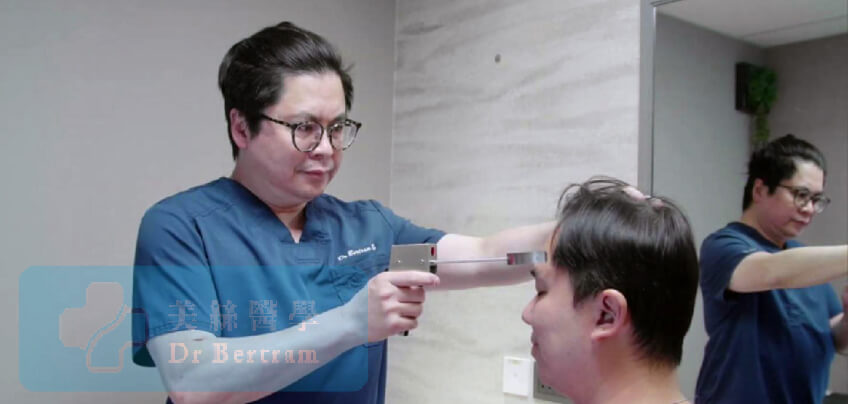
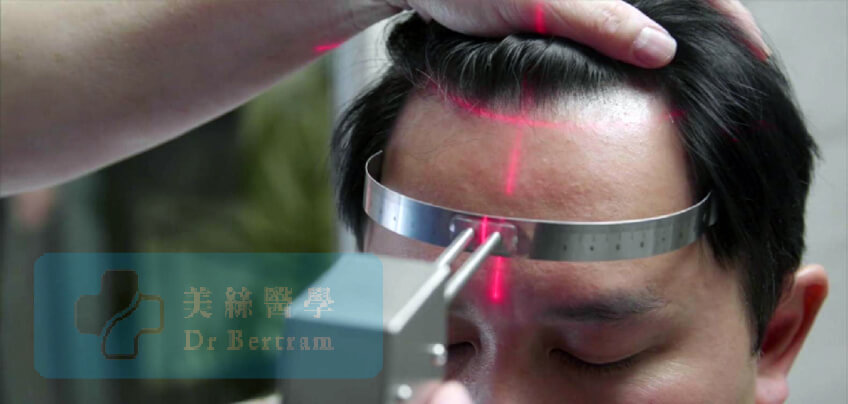
Hairline frames the face and has the most impact on a patient’s appearance. Hairline should be designed to match the individual facial contour for the best aesthetic result. One of the criteria for a properly placed hairline is symmetry. Differences in symmetry and height from one side to the other impair facial attractiveness.
Hairline placement is time consuming. The patient sees the hairline only after it is drawn. When the design is not accepted the surgeon has to repeat the whole process.
Advantages –
There are 4 Other Rules for Designing an Attractive Hairline in Men
Overall satisfactory rate is above 90% after restoring the empty areas with hair transplant. The number of follicular units required will br governed by the area and the density desired. When planned wisely, just 1,800 t0 2,400 grafts can achieve quite reasonable visual improvement. For those demanding a ver dense look, a second procedure mat be required for touch up. Usually in the second procedure the receded temporal hairlines on both sides are also repaired.

When to Treat:
Ideal for men with stable hair loss and strong central forelock
Usually Class III pattern
Common in men aged 28–40
Graft Plan:
Focus: Filling bilateral recessions
Hairs needed: ~2,400–3,200
Goal: Blend into existing forelock, preserve natural irregularity
Avoid over-lowering the corners to maintain age-appropriate look

When to Treat:
Patients with central tuft preserved but deep frontal recession
Must confirm that forelock is strong and stable
Graft Plan:
Focus: Reconstruct bilateral frontotemporal zones
Hairs needed: ~3,000–3,600
Create an arc from temples to the forelock to reframe the face
Preserve donor area for possible future mid-scalp restoration

When to Treat:
Central front hairline and mid-scalp are thinning or gone
Hair loss pattern is more linear from front to crown
Stabilize with medication first if ongoing loss suspected
Graft Plan:
Focus: Restore frontal band and mid-scalp
Hairs needed: ~3,600+
Create a solid, natural-looking front-to-mid coverage
Avoid crown work at this stage to conserve donor supply

When to Treat:
More advanced cases with both frontal and deep temporal loss
Often requires more conservative design due to donor limitations
Graft Plan:
Focus: Lower central hairline + recreate temporal angles
Hairs needed: ~3,600+
Temporal points need careful angulation and fine grafts
Prioritize framing the face; avoid over-ambitious density
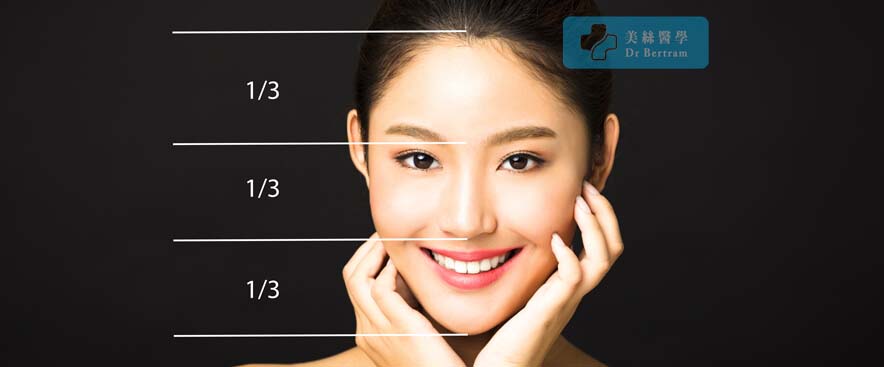
The main challenge is how to achieve a very natural looking result with adequate density. The traditional Hairline Restore technique include:
Unfortunately the too many options makes it rather difficult for the inexperienced surgeon to decide on the most appropriate hairline design.
Hairline frames the face and has the most impact on a patient’s appearance. Hairline should be designed to match the individual facial contour for the best aesthetic result. A well placed hairline must be symmetrical, and properly related to the other facial features (eyebrow, nose, forehead).
However it is important to realize that design of a hairline for women is very different from that for men. The Laser Hairline Placement technique, for example, is not applicable.
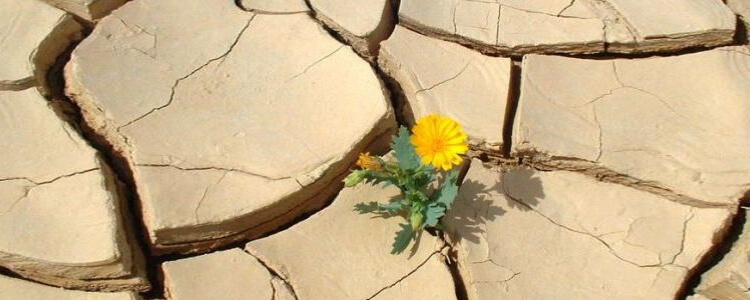
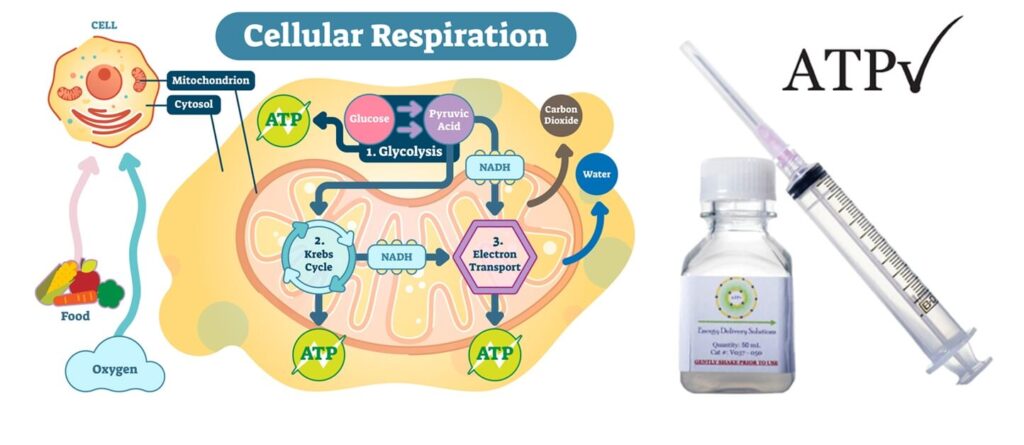
ATP (Adenosine triphosphate) is an energy molecule that catalyzes a variety of important cellular reactions in our bodies. The lack of ATP can cause cell damage and eventual cell and tissue death. Because the creation and regulation of ATP requires oxygen, tissues deprived of oxygen often experience ATP loss and become damaged. Because of this, ATP becomes crucial for patients healing from wounds; especially surgical wounds.
The usual kind of ATP solution in a vial is very cheap but the use is limited, as aqueous solution cannot be absorbed into cells.
In 2002, Dr. William Ehringer a Professor at the University of Louisville, School of Medicine, discovered a method to encapsulate and deliver ATP to cells. After 10 years of research the final formulations were identified – Lyposomal ATP. In 2012, Dr. Ehringer founded Energy Delivery Solutions in manufacturing ATP for use in post-surgical patients, patients with delayed wound healing, and in hair restoration.
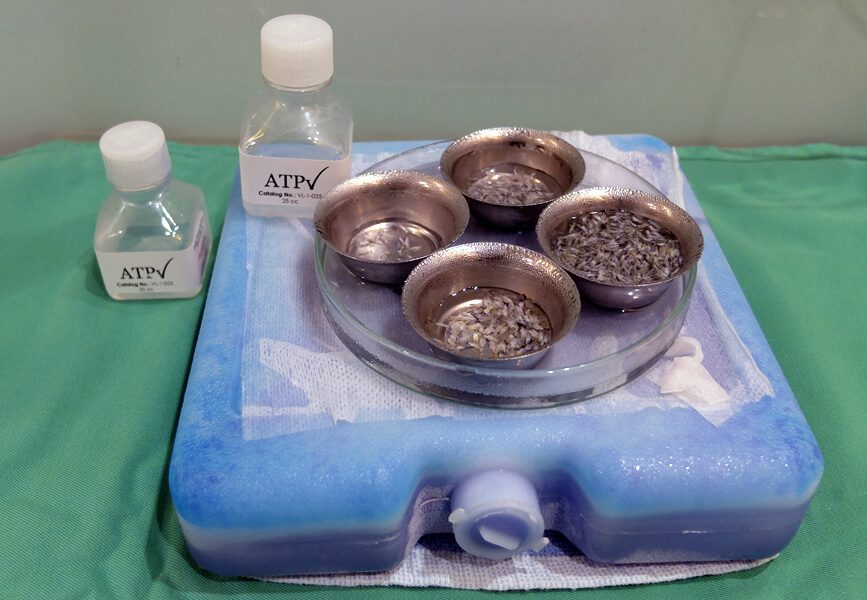
Experiments by Dr Cooley and Dr Pathomvanich our Medical Advisor showed that, in hair transplant surgery, Lyposomal ATP allows for quicker healing and better hair transplant yields. In 2015 Dr Bertram Ng met with Dr Ehringer founder of Energy Delivery Solutions. Dr Ehringer and Dr Cooley. Both recommended:
1. Store grafts in ATP-containing storage solution
2. Spray ATP Formulation at home onto the recipient scalp first 48 hours, up to 5 days
Clinical trials on selected subjects for over a year revealed very impressive result. Since October 2016 we provide Lyposomal ATP to all patients routinely. As Lyposomal ATP has only a very short half life, we have to import from the state every few weeks. The benefit is well worth the extra efforts and expenses.
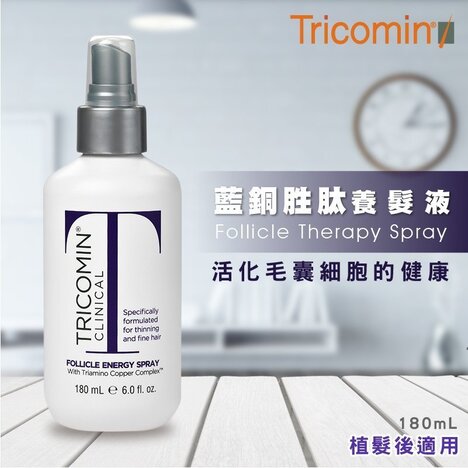
The Tricomin Follicle Spray from USA which contains Copper Nutritional Complex for use after hair transplant. The preparations we are using are fully imported from USA to ensure quality.
Hair transplants can initially traumatize the scalp and can result in a temporary hair loss during the first 4 months (this is known as shock loss). Some patients may experience swelling in the transplanted area. The transplanted donor follicles can also experience difficulty adapting to their new environment. Clinical studies have demonstrated the following beneficial effects of laser when use in conjunction with hair transplant.
Laser hair therapy stimulates the mitochondria in cells to increase the production of adenosine triphosphate (ATP). ATP is the form of energy used by hair cells to grow imto follicles. Abundant energy supply is critical when dealing with weakened and traumatized hair follicles.
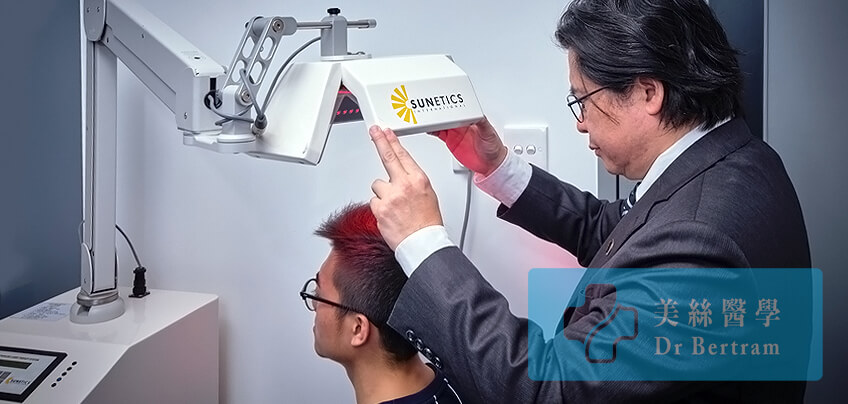
Laser hair therapy devices have been used by thousands of hair transplant centers all over the world (such as Bosley and HairClub). However handheld contraptions made with cheap Light Emitting Diodes (LEDs) are worthless when it comes to energizing the base of hair follicles. Technologically advanced device with the FDA-cleared is now available in our center for use after hair transplant.
A 20 minutes of treatment is able to revive the mitochondria of hair cells. This can result in stronger hair follicles with a higher probability of surviving the operation. These extra amounts of “survivor” hair grafts will eventually grow into healthy, terminal hairs.
Graft transection occurs when a hair follicle is accidentally cut or damaged during the harvesting or implantation process in a hair transplant. This can happen if the angle or depth of the instrument used is incorrect, severing the follicle’s lower portion, which contains essential stem cells and the dermal papilla.
Once a follicle is transected, its ability to regrow healthy hair is significantly reduced – or lost entirely – leading to poor graft survival and wasted donor resources. Minimizing transection requires precision, experience, and the use of fine instruments under proper magnification. That’s why surgical skill and technique play a critical role in achieving lasting, natural-looking results.
Graft Survival After Partial Transection
Removing too much tissue around the hair follicle is also a form of physical injury. Stem cells responsible for follicular re-growth is located at the tissue surrounding the graft.
Seager reported in 1997 that Chubby Graft ( more fat ) survives better than Skinny Graft ( less fat ). In 2010 Beehner commented that the differences in survival is that the stem cells are retained in chubby grafts but trimmed away in the skinny grafts
Dehydration causes serious graft damage. Deleterious changes in cell integrity when follicles are left to dry for more than 5 minutes (Gandelman). When grafts are exposed to air for more than 10 minutes, more than 6% will die. After 20 minutes survival markedly decreases (Kim)
It may take 4–8 hours to complete the insertion. The elapsed time is critical for hair growth and survival because increased time results in decreased survival. As oxygen is depleted and waste products such as carbon dioxide, sugar, and urea begin to accumulate, a newly planted hair graft will be acidotic.
The first 48–96 hours after implantation is critical. If the circulation cannot be re-established (the primary inosculation) to correct the metabolic imbalances, the hair graft won’t survive and could die.
Duration After Extraction (hour) |
% of Growth |
|---|---|
| 2 | 95 |
| 4 | 90 |
| 6 | 86 |
| 8 | 86 |
| 24 | 79 |
From the table you can see that graft survival to 90% after 4 hours. So after 4 hours 10% of the extracted grafts will not grow hair. This is a wastage as the donor hair is limited in a life time.
This is a form of physical injury. Study had shown that all frozen graft will die. Domestic-grade refrigerator may have temperature fluctuation. If the fridge temperature is set too low it may drop below 0°C and kill grafts without knowing. From studies there was no significant difference in survival within 6 hours, whether the grafts were stored in room temperature or 4 °C (Kim)
• Store graft at room temperature if procedure can be complated within 4 6 hours
• Use a special storage solution ( Hypothermosol ) to store grafts in the fridge
• Try to complete implantation within 6 hours
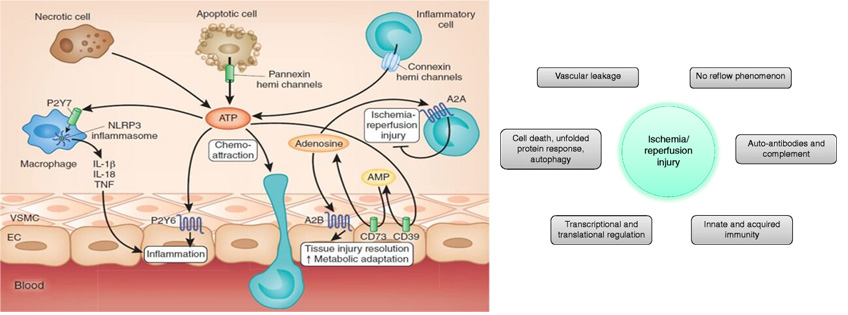
After a period of low oxygen, when the grafts are implanted and suddenly re-exposed to oxygen, they may form free radicals. These free radicals may cause cell injury and suboptimal growth, and is known as “Ischaemic Reperfusion Injury or IRI” on Re-implanted Graft.
Hair transplant is a surgical procedure—and your safety should never be left to chance. Unlike other treatments, hair transplant in Hong Kong is not government-regulated. That’s why we voluntarily adhere to internationally recognized medical standards to protect every patient.
At Dr. Bertram Hair Transplant Centre, we follow the American Office-Based Surgery Guidelines — the same safety protocols used across top medical institutions in the U.S.
We don’t just follow international standards — we help define them. Dr. Bertram is regularly invited to teach and present at global conferences, sharing techniques and safety protocols with other surgeons. Our standards reflect not only what we practice — but what we teach.
Maintain strict surgical sterility
Use disposable instruments and sterilized tools
Control airflow and minimize contamination risk
Keep infection rates under 0.5% — far below industry norms
Avoid routine antibiotics by preventing infections naturally
We model our protocols after the Massachusetts Medical Society’s Office-Based Surgery Guidelines, specifically Level I ( Conscious Sedation ) — the safest level for minor outpatient surgery.
Hair transplant is a very safe procedure but not completely risk free. Your journey should start with a complete medical assessment, not a sales pitch:
Detailed health history and physical examination
Review of chronic illnesses and medications
Liaison with your GP or specialist when necessary
If you are immunocompromised or have higher surgical risk, we refer you to hospital-based care. No shortcuts. No compromise. Just safe, personalized treatment.
Hair transplant is extremely safe — when done under the right conditions:
Local anesthesia only
Minimal oral calming medications
No IV or deep sedation
You stay awake, alert, and responsive
No interference with heart rate, blood pressure, or breathing
Though Level I protocols don’t require advanced support, we’ve voluntarily upgraded to Level III resuscitation capacity, including:
Automated External Defibrillator (AED)
Oxygen, suction, and full airway equipment
Continuous monitoring (pulse oximetry, ECG, BP, temperature)
Full emergency drug kit
We’ve never needed to use this equipment — but it’s there, just in case.
This is extremely rare in our level I office Procedure, when only local anesthesia and conscious sedation are used.
Our Preventive Protocol :
All patients are personally examine by our doctor
We are a dedicated hair transplant and SMP-only center. No other procedures. The routine use of antibiotics becomes unnecessary.
Maintain strict surgical sterility
Use disposable instruments and sterilized tools
Control airflow and minimize contamination as to operate under an aseptic environment
Keep infection rates under 0.5% — far below industry norms
Selective use of prophylactic antibiotic in high risk patients (e.g. diabetes)
Antiseptic hair wash before surgery
Doctors Follow-up on day 1 and 7 after surgery
Meticulous wound care
Avoid sweating from strenuous exercise the first week
Frequent hair wash at home
Prompt recognition and treatment
At our clinic, we maintain an infection rate of below 1% for over seven years — without routinely prescribing antibiotics. We believe in strict infection control, not over-medication. We follow international sterilization standards, use disposable tools, and maintain a clean surgical environment. Our approach is safer, cleaner, and more responsible
The most serious risk in hair transplant is not infection, but a life-threatening allergic reaction (anaphylaxis) to antibiotics, which can lead to respiratory collapse or death.
Unnecessary antibiotic use can also cause bacterial resistance, disturb gut flora, and impact the gut-brain axis, leading to long-term health issues.
Some clinics rely on antibiotics to compensate for poor hygiene, So, Ask the clinic you’re considering: do they dare NOT to use antibiotics? If not — why not?
Pain is one of the biggest concerns for first-time hair transplant patients — and we understand that. That’s why minimizing discomfort has become a core part of our patient care philosophy.
At Dr. Bertram Hair Transplant Centre, we’ve developed a proven protocol that combines medical precision with patient-centered comfort — so much so that most of our patients sleep through the procedure.
Ultra-Fine Needles (30–33G): These significantly reduce injection pain
Oral Anti-Anxiety Medication: Helps you stay calm and relaxed, without affecting awareness
Gate Control Theory Application: By gently stimulating skin receptors with pressure and distraction, we “close the gate” to pain signals before they reach the brain
Twilight Local Anesthesia + Conscious Sedation: You remain awake and responsive, but deeply relaxed and pain-free
“I was surprised at how comfortable it was — I actually dozed off halfway through.”
In selected cases, we combine short- and long-acting local anesthetics, ensuring the treated areas stay pain-free for hours after surgery — often well into the next day.
We’ll provide:
Simple, clear home care instructions
Medications only if needed
Reassurance and direct access to our team for any concerns
Many patients are surprised by how mild the post-op sensation is — and some need no painkillers at all.
Fast healing. Clear instructions. Personal follow-up – That’s the difference of a clinic that’s doctor-led and patient-focused.
In 2018, Dr. Bertram was invited by the Chinese Association of Hair Restoration Surgery to lecture in Beijing on advanced methods for painless local anesthesia — a testament to our expertise in making this experience as comfortable as possible.
Your comfort and safety remain our top priorities — even after the procedure ends.
At Dr. Bertram Hair Transplant Centre, our carefully designed post-op care ensures a quicker return to daily life, with most patients resuming light activities or work within 2 to 3 days.
Thanks to our advanced anesthesia protocol and personalized aftercare, discomfort is minimal and manageable. So, what makes recovery easier at our clinic ?
More on possible complications after a procedure …
We use only Level I Conscious Sedation — no IV drips, no general anesthesia.
This means:
You stay alert and responsive during the procedure
You can walk out comfortably without grogginess or nausea
You recover faster and more clearly
Upon discharge, we provide painkillers and sleeping aids to ensure a restful night
Most patients report being pain-free for hours or even the entire next day
Our post-op protocol allows for a return to light activity or work within 2–3 days
During incision we inject tumescence to lift the scalp from the bone. After surgery when you resume the upright position this tumescence will drain down to your face and eyes, usually on the third day and lasts a week. This is harmless but unsightly and, once happens, nothing really helps.
Our tumescence is specially formulated to prevent swelling
At Dr. Bertram Hair Transplant Clinic, we pay close attention to every stage of wound healing — not just graft survival. Why? Because proper healing is essential to natural results, faster recovery, and long-term follicle health. This is part of what sets us apart from many clinics that overlook the science behind tissue repair.
When a recipient site is created during hair transplant, the body immediately begins the wound healing process. This isn’t just about scabs falling off — it’s a highly regulated biological sequence involving growth factors, immune cells, and revascularization. We understand and respect this healing cascade, and tailor our techniques and aftercare to support it fully.
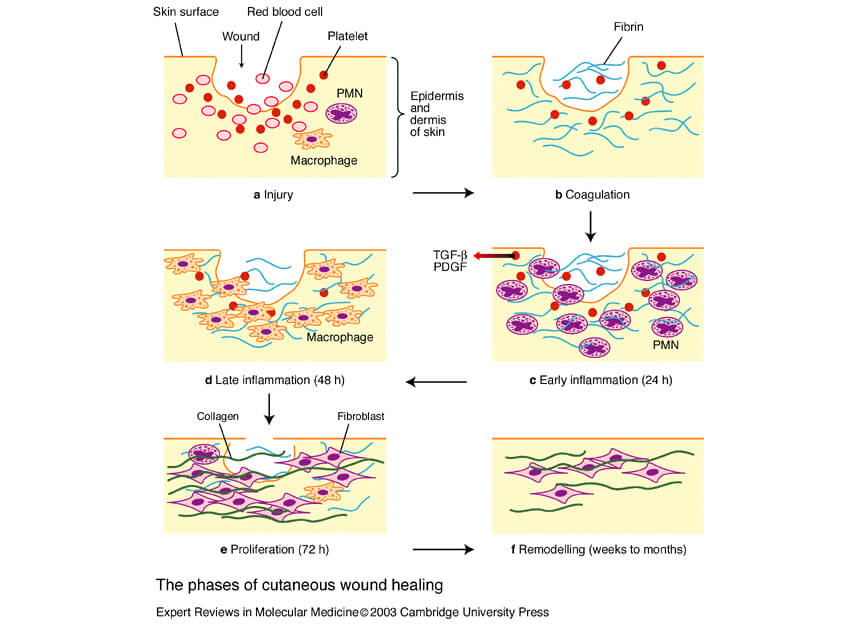
Inflammatory Phase (Day 0–3)
This is when your body responds with clot formation, fibrin deposition, and an influx of white blood cells. Our technique ensures that trauma is minimized so that inflammation remains controlled.
Proliferative Phase (Day 3–21)
Fibroblasts and epithelial cells migrate to close the wound. Multiple growth factors — including PDGF, TGF, EGF, and VEGF — are released to help regenerate tissue and begin the formation of new skin around the grafts.
Revascularization (Days 1–7 and beyond)
This is where the real graft survival happens:
Stage I: Plasmatic Imbibition (Days 1–3) – Grafts passively absorb nutrients from surrounding tissue.
Stage II: Primary Inosculation (Days 3–7) – Tiny vessels begin to connect the grafts with recipient blood supply.
Stage III: Secondary Inosculation (Day 7 onward) – New vessels form and extend into the grafts, stabilizing their long-term survival.
Day 1: Transforming alpha growth factor (TGFA) appears
Day 3: Most major growth factors become active
Days 7–21: Moderate activity continues to support tissue repair
Day 28: Only EGF and VEGF remain, sustaining late-phase healing
We understand this timeline and work with your body — not against it — to maximize recovery and results.
At many clinics, wound healing is an afterthought. At ours, it’s part of the treatment philosophy. We use advanced techniques to minimize trauma, promote growth factor release, and avoid unnecessary interference (such as overuse of antibiotics or aggressive manipulation).
By respecting the body’s natural repair process, we help your transplanted hair thrive — and heal with fewer complications. This is more than a procedure. It’s a science. And we take it seriously.
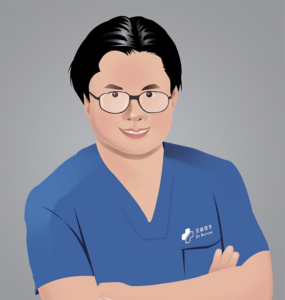
With top-tier accreditation, international recognition, and a pain-free surgical process — your comfort and safety are always in expert hands.
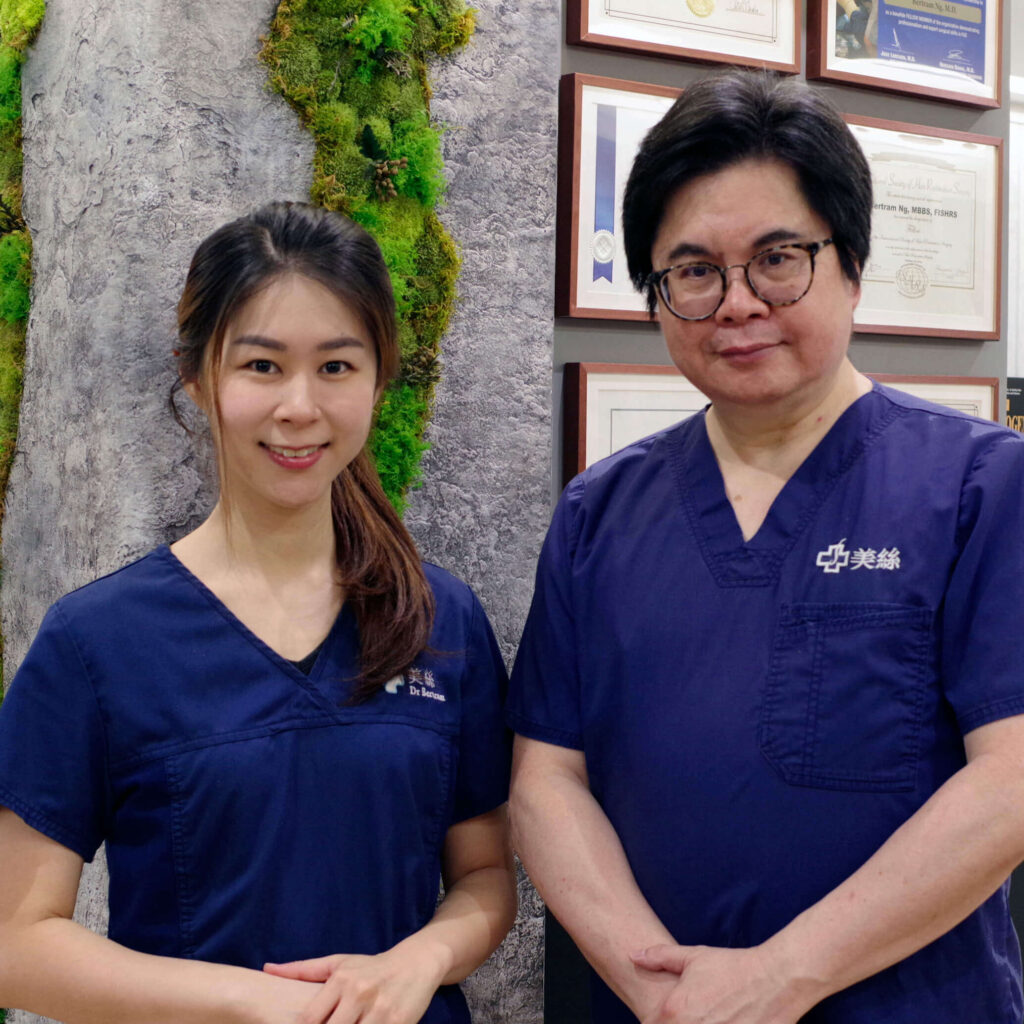
From consultation, surgery, to aftercare, you will receive continued personal care by our doctors, not just consultants.
Have a question? Please feel free to call our friendly customer service.
International Accreditations
Recognized by leading global medical bodies, our clinic stands as one of the most qualified and internationally accredited hair transplant centers in Hong Kong and mainland China. We are proud to uphold the highest standards in medical ethics, safety, and surgical expertise.
Hair transplant is the ultimate solution to restores hair, but not everyone is good candidate.
Our online assessment helps determine if these procedures suit you, saving you time and costs.